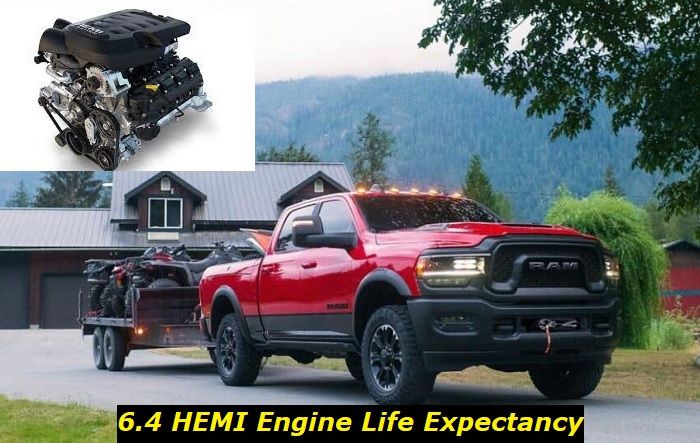The Ford Explorer's reverse capability is just as crucial as its forward motion. Although you can still drive it, there will always come a time when you need to back up from an unexpected obstruction or maneuver yourself out of a confined space. Therefore, you have to ensure its smooth operation at all times.
Ford Explorer automatic transmission highlights
- Average lifespan:140,000-160,000 miles
- Reliability Score:Low
- Prone to minor issues:Yes
- Price for repair after failure:$1,900-$2,400
- Price for replacement:$6,000-$7,500
- Availability of parts:Average
- Common problems:jerking, poor electronic system, a lot of upgrades and TSBs, transmission is still under development.

Insufficient or Poor Quality of Transmission Fluid
Like any other vehicle, poor lubrication due to low or contaminated transmission fluid can bring about plenty of mechanical issues in the Explorer. So, always start your diagnosis in this area when it comes to transmission-related problems including the inability of your auto to go into reverse.
Insufficient or poor-quality transmission fluid is guaranteed to prevent the gears in your transmission from engaging or interlocking properly. It can trigger things that could greatly affect the operation of your vehicle such as not having reverse, slippage, shifting delays, leaks, noises, dashboard warning indicators, failure to engage from Park, sluggish acceleration, and overheating.
You can easily tell the level and quality of your transmission fluid using the transmission dipstick. If the fluid is on or near the "Min" mark, it should be topped up immediately. On the other hand, if the fluid is already too dark or it shows signs of contamination, the dirty fluid must be flushed and changed with a fresh batch.
You can easily refill or change the transmission fluid of the Explorer as long as you know where the transmission dipstick, reservoir, and drain plug are located. However, if you are not sure about the process or you don't know the right fluid for your transmission, we highly recommend the help of a professional mechanic in accomplishing this task.
Faulty Shift Lock Solenoid
When you put your Ford Explorer into reverse, the shift lock solenoid is responsible for engaging the locking mechanism that keeps the shifter in place. If the shift lock solenoid is faulty, it can prevent the locking mechanism from engaging, which will stop the car from going into reverse.
There are a few symptoms that can indicate that the shift lock solenoid is failing. If you notice that your SUV is having trouble going into reverse, or if the shifter feels loose when you try to put it into reverse, these are both signs that the shift lock solenoid may be failing.
There are a few solutions to this problem. The first is to try and clean the shift lock solenoid. If this does not work, you may need to replace the shift lock solenoid. You can also try bypassing the shift lock solenoid altogether. All of which are complicated solutions that require the skills of a qualified mechanic.
Malfunctioning Ignition Barrel
The ignition barrel is a cylindrical metal component in a car's ignition system. It contains the tumblers that engage with the key to start the engine. When the key is turned, the tumblers line up in a specific order and allow the current to flow from the battery to the starter motor.
If there is an issue with the ignition barrel, it can lead to a number of problems. One of the most common problems is that the car will not start. Another outcome of this problem is that the car will not shift into reverse or not enter into other gears at all because it will be stuck in Park mode. This can be due to reasons such as a broken key, a faulty tumbler, or a problem with the wiring.
If you are having problems with your ignition barrel, there are a few things you can do to diagnose the problem. First, check to see if the key is broken. If the key is broken, it will need to be replaced.
If the key is not broken, try turning the ignition barrel with a screwdriver. If the barrel turns freely, then the problem is likely with the tumblers. Be careful when doing this as there's a high risk of damaging the part. If the barrel does not turn, then the problem is likely with the wiring or the ignition barrel itself.
There are a few solutions to the problem of a faulty ignition barrel. One solution is to replace the barrel. Another solution is to repair the wiring if it's causing the issue. Lastly, you can try to replace the tumblers or the entire ignition barrel.
Worn Shifter Mechanism and Bushings
A shifter mechanism is responsible for the movement of gears in a car. This part is located between the engine and the transmission. The shifter mechanism consists of several moving parts, including gears, linkages, and cables. These parts work together to move the gears in the transmission.
The shifter mechanism is connected to the transmission by a series of bushings. The bushings are made of metal or plastic and act as bearings between the moving parts of the shifter mechanism and the transmission. Over time, these bushings can wear down, causing the shifter mechanism to become less responsive.
If the bushings in the shifter mechanism are worn, it can cause the gears to become misaligned. This can lead to the car not being able to shift into reverse. In some cases, the car may be able to shift into reverse, but the engine will rev without the car moving.
If you are experiencing these symptoms, it is important to have the shifter mechanism and bushings inspected by a qualified mechanic. They will be able to determine if the bushings need to be replaced. In some cases, the entire shifter mechanism may need to be replaced.
Bad Shifter Cable
When you put your Ford Explorer into reverse, the shifter cable is responsible for telling the transmission to shift gears. If there is an issue with the shifter cable, it can prevent the car from going into reverse.
There are a few symptoms that can indicate a problem with the shifter cable. If you notice that it's difficult to shift into reverse, or that the car seems to get stuck in neutral, then there may be an issue with the shifter cable.
If you think that your shifter cable is defective, the best thing to do is to take it to a mechanic and have them check it out. They will be able to tell you for sure if there is an issue with the shifter cable, and they can also help you fix the problem.
There are a few different ways to fix a malfunctioning shifter cable. The most common way is to simply replace the shifter cable. However, if the problem is more serious, you may need to have the entire transmission rebuilt or replaced.
Ruined Valves
Transmission valves are responsible for controlling the flow of transmission fluid. If there is an issue with the valves, it can cause the fluid to not flow properly, which can lead to a loss of reverse gear in a Ford Explorer.
To diagnose the problem, look for symptoms such as hard shifting, delayed engagement, and slipping. If you notice any of these symptoms, it's important to have the transmission checked by a qualified mechanic as soon as possible.
There are a few ways to solve the problem of a bad valve in transmission. One is to replace the entire valve body. Another is to replace only the affected valves with new ones. Whichever method you choose, it's important to make sure that the work is done by a qualified professional.
Damaged Torque Converter
The torque converter is a fluid coupling that connects the engine to the transmission. It allows the engine to spin independently of the transmission, which is necessary for starting the car. The torque converter also increases fuel economy by reducing the amount of work the engine has to do.
An issue with the torque converter can lead to no reverse in the Ford Explorer. To diagnose this problem, check the transmission fluid level and condition first. If the fluid is low or dirty, it may be causing the issue. Next, check the torque converter itself for damage. If it is damaged, it will need to be replaced. Finally, check the transmission input shaft for damage. If it has been compromised, it will need to be changed with a new one, too.
The replacement parts are a bit expensive, but they are important for the proper operation of the car. If you are having trouble finding these parts, you can contact a Ford dealership or a qualified mechanic. They should be able to help you find the parts you need.
Conclusion
Having problems putting your Ford Explorer in reverse will not only greatly limit your mobility when driving, but it can be cumbersome if it is coupled with other transmission-related issues.
Dilly-dallying before finally deciding on bringing your auto to the mechanic can have dire consequences, too, because this can be an indication of other looming troubles in your SUV. Therefore, this is a matter that needs to be addressed by a professional mechanic or your Ford dealership immediately.
About the authors
The CarAraC research team is composed of seasoned auto mechanics and automotive industry professionals, including individuals with advanced degrees and certifications in their field. Our team members boast prestigious credentials, reflecting their extensive knowledge and skills. These qualifications include: IMI: Institute of the Motor Industry, ASE-Certified Master Automobile Technicians; Coventry University, Graduate of MA in Automotive Journalism; Politecnico di Torino, Italy, MS Automotive Engineering; Ss. Cyril and Methodius University in Skopje, Mechanical University in Skopje; TOC Automotive College; DHA Suffa University, Department of Mechanical Engineering





Add comment